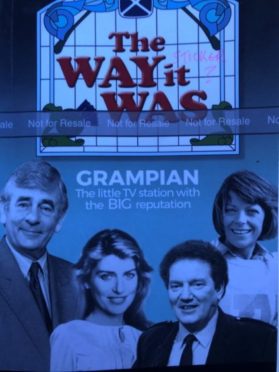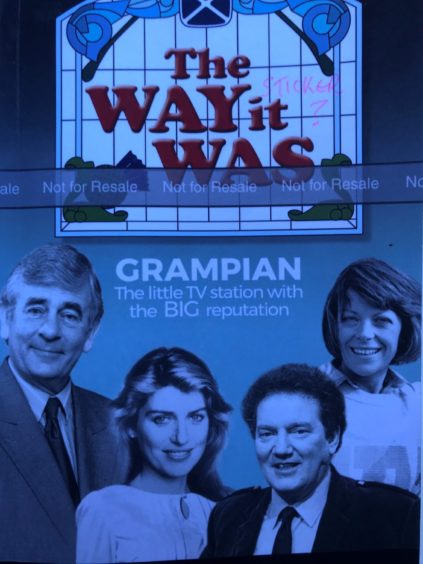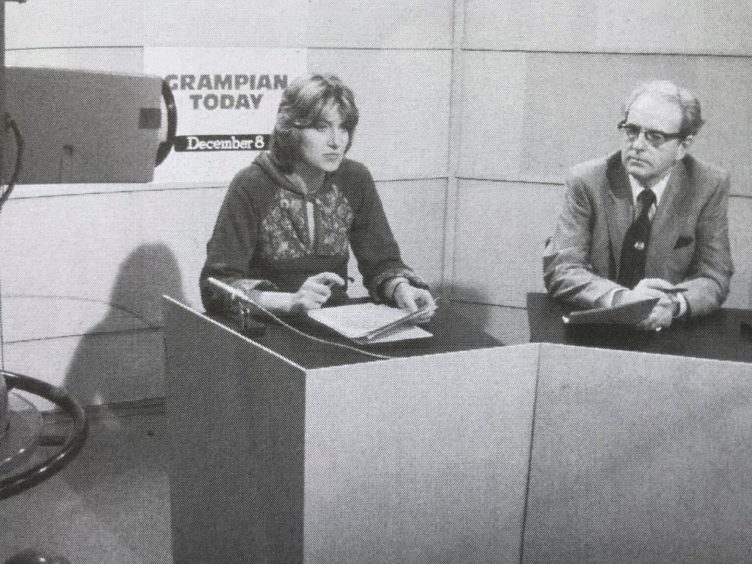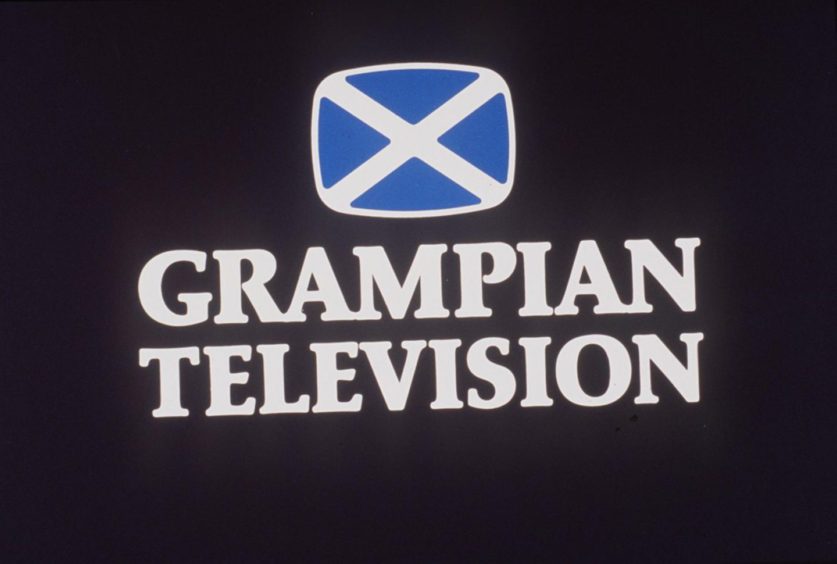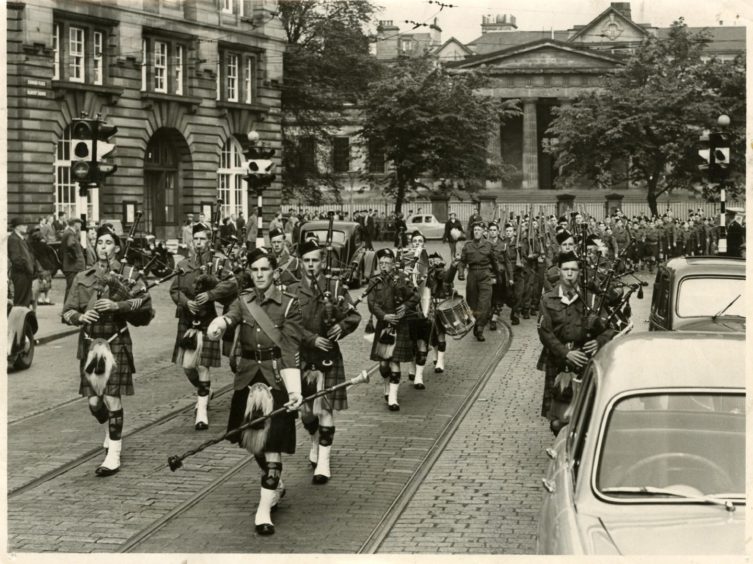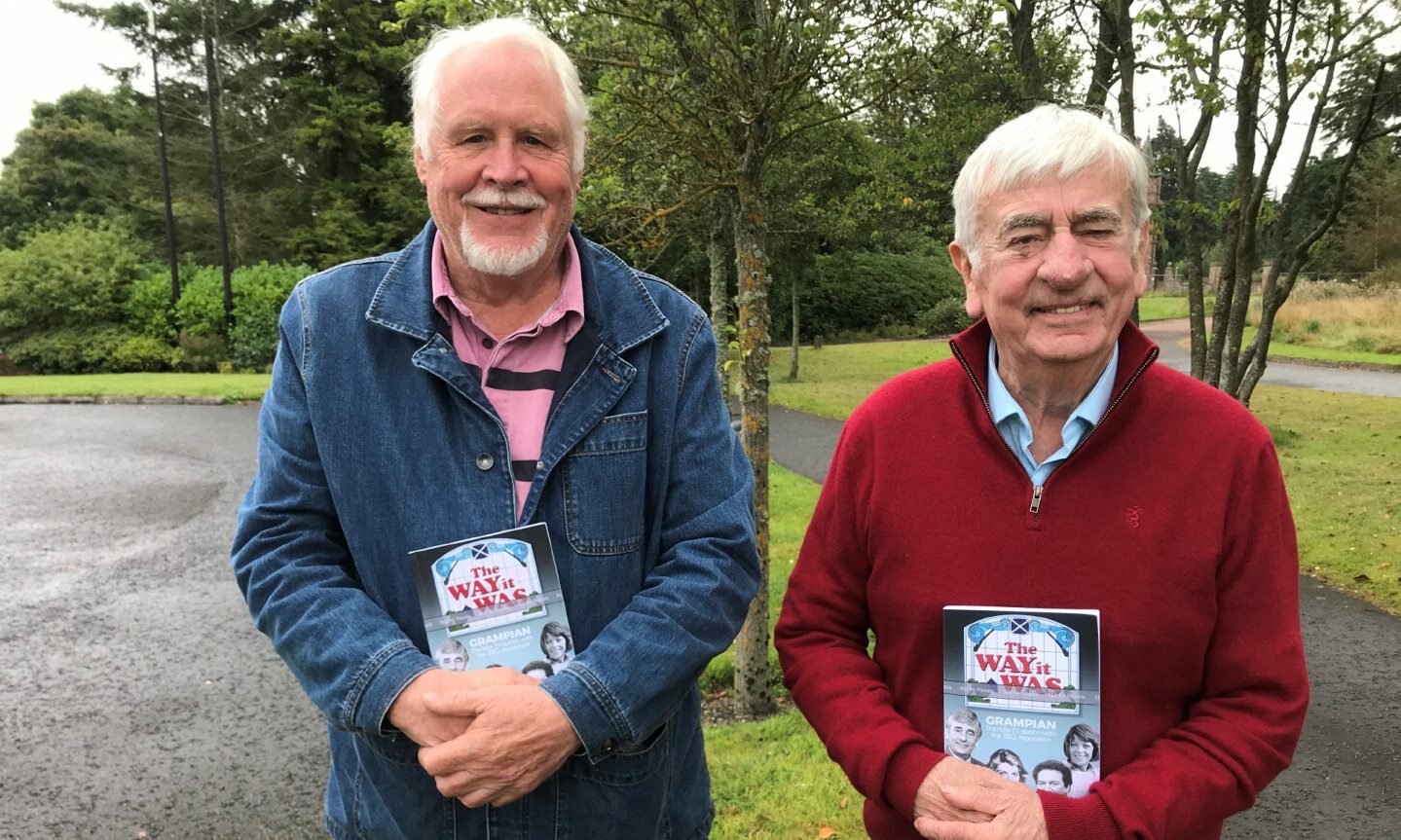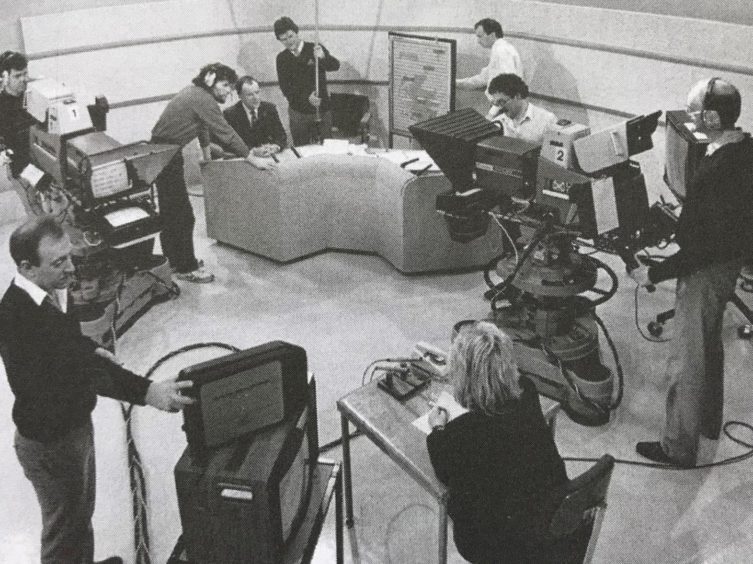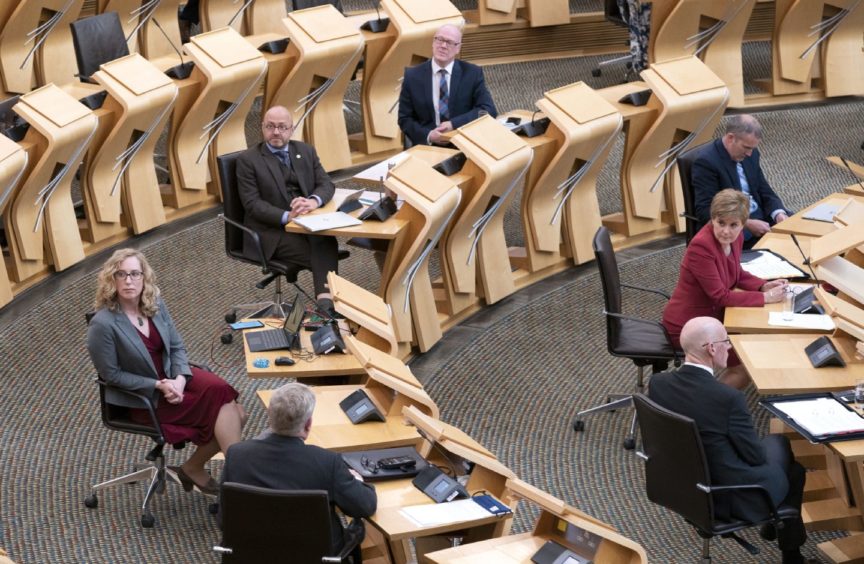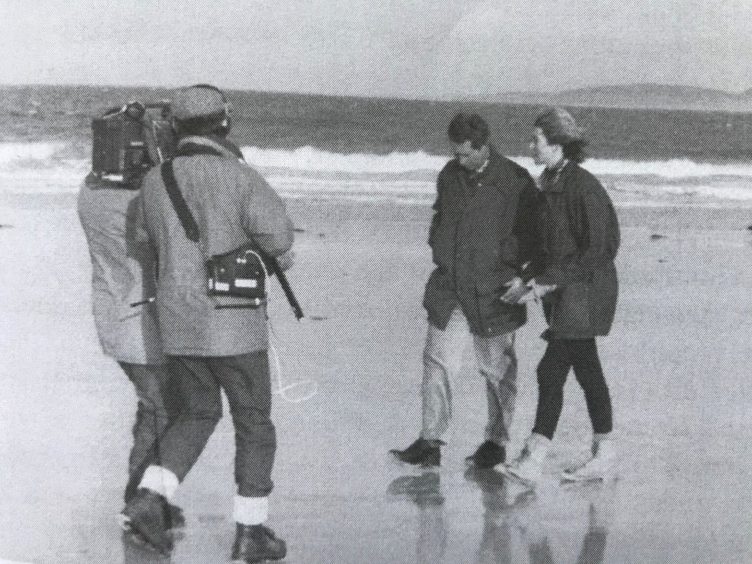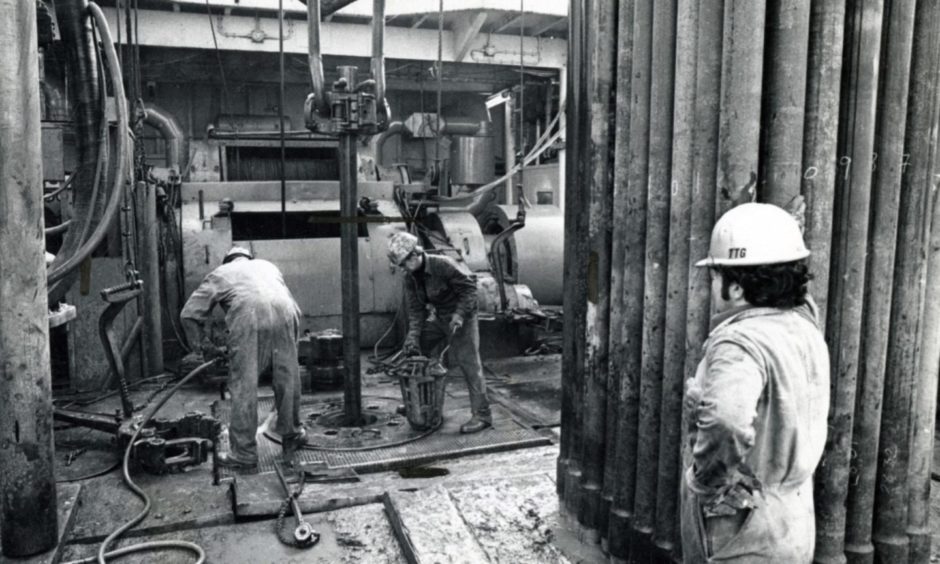Sixty years after the launch of Grampian Television, former channel stalwarts Jimmy Spankie and Ted Brocklebank reflect on “the way it was” and tell Michael Alexander why they think the station should have remained independent for longer.
It was the little station with a big reputation.
Grampian Television, which launched on September 30, 1961, served an area bigger than the Netherlands, working from studios as far apart as Aberdeen, Stornoway, Dundee and Inverness.
For 36 years, the station’s producers and broadcasters informed, entertained and reflected the lives, music and cultures of more than a million viewers throughout the north of Scotland.
Its award-winning news programmes, network documentaries and entertainment shows won it the highest ratings approval of any company in the ITV network.
But when the Aberdeen-based station “merged” with the Scottish Media Group in 1997 to later become the northern TV news service of Glasgow-based STV, should more have been done to safeguard Grampian’s future as an independent station?
New book
The subject is broached in a new book ‘The Way It Was’, compiled by former Grampian TV stalwarts Jimmy Spankie and Graham McLeish, and edited by former head of news and documentaries chief Ted Brocklebank, to mark the 60th anniversary of Grampian Television’s creation.
In an interview with us, Ted explains that he was happy to get on board when he was approached by Jimmy to work on the book.
However, he didn’t want it to be “just a nice anthology of stories about Grampian”.
He felt it should maybe reflect on “what was lost when Grampian went”.
“Although the book contains a lot of reminiscences from past presenters about the things they did and funny things that happened, there’s also an edge to this book which is a sense of loss that Grampian had to go the way it did in 1997,” says Ted.
“The profits for the company had never been higher, their shares had never been higher, and yet there was a sense of betrayal that it was sold out to the Scottish Media Group at that time.
“A lot of people have reflected this in their pieces in the book, where people say this didn’t have to happen – Grampian could have survived, and really it should have survived.”
Revelations
In an interview with Ted in the book, former Grampian chief executive Alex Mair says he still feels it was the “wrong decision” and said if he had still been in charge in 1997, the merger would not have happened.
George Mitchell, who was director of programmes from 1988-1997, reveals he was “angry and sad” when Grampian ceased. He says that “in reality it was a takeover”.
Sadness is also expressed by Aberdeen businessman Colin Lawson, who says Grampian was the “envy of the country” for the way it showed real people going about their day to day business, adding: “Dear auld Grampian, fit wye did ye hae to ging awa’?”
Of course, on the 60th anniversary of Grampian’s formation, the authors acknowledge that times have changed and that today’s STV journalists – including a number still working from the Grampian days – continue being of a high calibre albeit with different technology at their disposal.
However, the authors hark back to a time when Grampian TV was “much, much more than the northern news outlet for STV”.
Former piper Jimmy Spankie
Jimmy Spankie, now aged 85 and from Dundee, joined Grampian in 1961 as a continuity announcer and news reader.
After two years National Service, where he played the bagpipes with the Black Watch, followed by a couple of years in the Dundee jute industry, he found his background in amateur dramatics – learning lines and delivering lines – was ideal training for his move into the relatively new medium of television.
He remembers businessmen initially being reluctant to appear on screen “largely because they were scared they were going to be exposed”.
However, before long, people realised TV was here to stay and that exposure on screen offered invaluable commercial opportunities.
With the BBC by contrast doing voiceovers between programmes, the decision of Grampian to have an on-screen continuity announcer between adverts and the next show also meant he was able to build up a “rapport” between the public and the station.
“Because we were new to the game in a sense, I joined on a Monday morning and by the Monday evening I was doing an interview about a 50 megaton bomb which I knew nothing about,” recalls Jimmy, who worked for Grampian for 20 years before his last full-time job – being national manager for ITV breakfast TV show TV-am.
“By the end of the interview my boss said ‘that wasn’t too bad but if you can stop sticking your tongue out every 10 seconds and saying ‘I see’ at the end of every answer, you might get on a bit’!,” he laughs.
“That was just pure nerves. You learn quickly!
“I think also, in a sense, if you are on telly, you have your boss in the studio and in a sense the public is also your boss.
“I think one good expression to explain this is ‘if the camera likes you’, then you were off to a flying start!”
Former head of news Ted Brocklebank
Ted Brocklebank, now 78, joined Grampian as a reporter in 1970.
After leaving Madras College in St Andrews, he started his journalistic career with Dundee-based Courier publisher DC Thomson & Co Ltd where he was a script writer for magazines including Commando.
After “trying desperately” to get into newspapers and being unsuccessful, he left for London to join a sports press agency.
Returning to Scotland to work in the press office of STV in Glasgow, this allowed him to resume his rugby playing career with Madras College FP in St Andrews.
Desperate to get into reporting and researching, however, he successfully applied for a job as a reporter with Grampian.
It was the start of a 25-year Grampian career that saw him go from reporter to head of news and current affairs then branch off into a separate division as head of documentaries and features.
Two years before the “takeover” by SMG, he left Grampian because he could “see the way things were going”.
He set up his own production company Greyfriars Productions and carried on making TV programmes before serving as a Conservative MSP for Mid Scotland and Fife from 2003 to 2011.
Despite the passing of the years, Grampian TV still holds a special place in his heart.
He is still in awe of the talent that came through the ranks ranging from TV golden girl Selina Scott and future MP Anna Soubry to the brilliantly articulate Donny B Macleod, Donald MacCormick and more recently the likes of award winning BBC politics presenter Anne Mackenzie, Martin Geissler and Isla Traquair.
For Grampian to succeed, however, loyalty of viewers was always the key.
Not only did Grampian cover the biggest geographic area in the ITV network, it covered three distinctive communities – northern Scotland including the isles, Highland Scotland, and what could be called “Doric Scotland” stretching from Aberdeen to St Andrews.
Big stories
Ted was also privileged to cover some of the biggest stories of the day.
“I was very lucky,” he says. “I tell the story in the book of the first oil being sent in from the North Sea which nobody knew was going to happen, but we were told there was a helicopter coming into Dyce and BP would have something interesting to say to us.
“I was sent out on my own – we didn’t even send a crew – and that was like five days after joining the company, just to see what was in it.
“A guy came down with a helicopter brandishing a salad cream bottle with ‘black Guinness’ in it and he said, ‘gentlemen, this is North Sea oil!’
“I just became very interested in that whole subject because I could see how it was going to transfer little Aberdeen that I’d arrived in and turn it into something that was more like Houston, and so it turned out.
“Suddenly we were seeing people wearing cowboy boots down Union Street, we were seeing guys wearing Stetson hats driving Lincoln Continental motor cars and massive barbeques being held at weekends in country homes. It was like Houston . It took off. Buildings grew up around the town, all the talk in the bars was by roughnecks.
“Oil took over for a large part of my time at Grampian.
Editing
“Then my boss Charlie Smith who was very good to me – he let me start making documentaries.
“The thing that interested me most was actually the whole process of making a film.
“The reporting, gathering of the facts together, the writing of the thing and the editing of the thing which to me was the greatest skill in television – the actual editing room.
“That’s why eventually I moved out of straight news and set up a documentary department which more or less paid for itself with programmes sold to Channel Four, the ITV network, all over the place.”
*The Way it Was: Grampian – the little TV station with the big reputation, by Jimmy Spankie, Graham McLeish and Ted Brocklebank, is available now via Amazon, £12.99.
